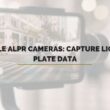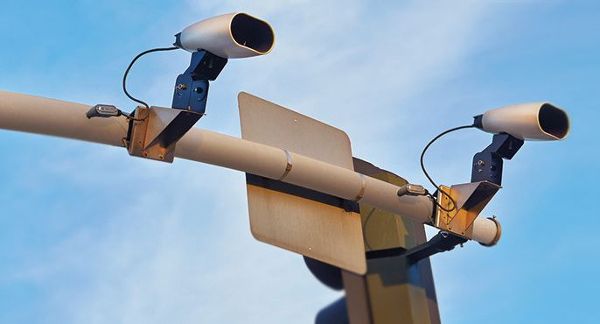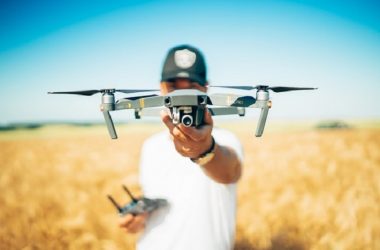In today’s digitally driven landscape, Automatic License Plate Recognition (ALPR) cameras have emerged as indispensable tools across various sectors. These cameras, equipped with cutting-edge technology, offer applications, that enhance security and efficiency. In this detailed exploration, we will delve into the nuances of ALPR cameras, their functionalities, and their pivotal role in modern surveillance systems.
What is an ALPR Camera?
An ALPR camera, short for Automatic License Plate Recognition camera, is a sophisticated surveillance device designed to capture and process license plate information from vehicles within its field of view. These cameras employ advanced algorithms to analyze captured images swiftly, providing real-time data on vehicle identification.
ALPR Camera: Range of Applications
ALPR cameras find applications in many scenarios, owing to their versatility and effectiveness. These are indispensable in various sectors, from law enforcement to parking management. Let’s explore some key applications:
- Law Enforcement: ALPR cameras serve as invaluable tools for law enforcement agencies, aiding in vehicle identification, tracking suspects, and locating stolen vehicles. By swiftly scanning license plates, these cameras enable law enforcement officers to respond promptly to incidents.
- Traffic Management: ALPR technology revolutionizes traffic management by detecting traffic violations, monitoring traffic flow, and enhancing overall road safety. Traffic authorities leverage ALPR cameras to enforce traffic regulations and optimize traffic flow.
- Parking Enforcement: ALPR cameras automate parking enforcement processes by identifying unauthorized vehicles, monitoring parking duration, and issuing citations. This streamlines parking management and ensures compliance with parking regulations.
- Toll Collection: ALPR systems streamline toll collection processes by automatically recording vehicle information and deducting toll fees without manual intervention. This enhances operational efficiency and reduces congestion at toll booths.
- Private Security: ALPR cameras bolster security in private premises by monitoring vehicle access, identifying unauthorized vehicles, and enhancing perimeter security. These cameras play a crucial role in safeguarding assets and preventing unauthorized access. Read More: Privacy vs. Security: Navigating the Ethical Landscape of ALPR Technology
- Asset Tracking and Management: ALPR technology facilitates asset tracking and management by monitoring vehicle movement, optimizing logistical operations, and enhancing fleet management efficiency. This enables organizations to track assets in real-time and streamline operations.
Main Components of an ALPR Camera System
An ALPR camera comprises several essential components that work cohesively to capture, process, and analyze license plate data. These components include:
- Camera: The camera serves as the primary hardware component, capturing high-resolution images of license plates with precision.
- Processor: The processor handles real-time data processing, utilizing advanced algorithms to extract license plate information from captured images swiftly.
- Software: ALPR software interprets processed data, matches license plate numbers against databases, and generates actionable insights or alerts based on predefined criteria.
- Database: The database stores a repository of license plate information, including vehicle registrations, blacklists, and historical data for reference and analysis.
- Integration Interface: The integration interface facilitates seamless integration with existing security or management systems, enabling data sharing and interoperability.
ALPR cameras: Common Built-in Features
ALPR cameras have a range of built-in features designed to enhance performance and functionality. Some common features include:
- High-Quality Imaging: ALPR cameras utilize advanced imaging technology to capture clear and accurate images of license plates, even in challenging lighting conditions.
- Real-Time Processing: The ability to process data in real-time ensures swift identification and response to license plate information, minimizing delays and maximizing efficiency. Automatic License Plate Recognition Software
- Data Logging and Integration: ALPR cameras log captured data and integrate seamlessly with existing systems, allowing for comprehensive monitoring, analysis, and reporting.
- Alert Notifications: ALPR systems can generate instant alerts or notifications in response to predefined events, such as detecting vehicles of interest or unauthorized access.
Considerations When Buying an ALPR Camera Solution
When selecting an ALPR camera solution, it’s essential to consider various factors to ensure optimal performance and suitability for specific requirements:
- Accuracy and Reliability: Choose ALPR cameras known for high accuracy rates and reliable performance across different environmental conditions.
- Integration Compatibility: Ensure compatibility with existing systems to facilitate seamless integration and data sharing, maximizing operational efficiency.
- Scalability: Opt for a scalable solution capable of accommodating future expansions or upgrades without significant disruptions or additional investments.
- Data Security: Prioritize ALPR systems that adhere to stringent data security standards to safeguard sensitive information from unauthorized access or breaches.
- Cost-Effectiveness: Evaluate the total cost of ownership, including initial investment, maintenance, and operational expenses, to determine the solution’s cost-effectiveness.
What’s Next After Getting the Right ALPR Camera?
After acquiring the ideal ALPR camera solution, the next steps involve installation, configuration, and ongoing maintenance:
- Installation: Strategically deploy ALPR cameras at key locations to maximize coverage and effectiveness while ensuring compliance with regulations and privacy considerations.
- Configuration: Customize system settings and parameters to meet specific requirements, including database management, alert thresholds, and integration preferences.
- Training and Familiarization: Provide training sessions for personnel responsible for operating and managing the ALPR system to ensure optimal utilization and performance.
- Monitoring and Maintenance: Regularly monitor the ALPR system for performance issues, conduct preventive maintenance tasks, and promptly address any technical problems or anomalies.
Maximizing ALPR Efficiency
To maximize ALPR efficiency, organizations can implement several strategies:
Optimized Camera Placement: Position ALPR cameras strategically in areas with high traffic volume and optimal visibility to capture license plates accurately.
Regular Maintenance and Calibration: Conduct regular maintenance and calibration of ALPR cameras to ensure optimal performance and accuracy.
Integration with Advanced Software: Integrate ALPR cameras with advanced license plate recognition software like Folio3 to enhance accuracy, real-time processing, and reporting capabilities.
Data Analytics and Optimization: Utilize data analytics tools to analyze ALPR data, identify patterns, trends, and anomalies, and optimize operational workflows for improved efficiency.
Training and Education: Provide comprehensive training and education to personnel responsible for operating and managing ALPR systems to maximize utilization and effectiveness.
Enhancing ALPR Camera Efficiency with Folio3 ALPR Software
While standalone ALPR technology offers significant benefits, combining it with advanced license plate recognition software like Folio3 can elevate its performance to new heights. Let’s explore how integrating ALPR cameras with Folio3 License Plate Recognition Software can enhance ALPR efficiency and accuracy.
Comparison Chart: Standalone ALPR vs. ALPR Camera + Folio3 Software
| Feature | Standalone ALPR | ALPR Camera + Folio3 Software |
|---|---|---|
| Accuracy | High | Enhanced |
| Customization | Limited | Highly Customizable |
| Real-Time Data Processing | Yes | Improved |
| Integration Flexibility | Limited | Seamless |
| Reporting and Analytics | Basic | Comprehensive |
| Ability to Detect Blurry/Low Light Plates | Limited | Yes |
As depicted in the comparison chart, integrating ALPR cameras with Folio3 License Plate Recognition Software offers numerous advantages over standalone ALPR technology. From enhanced accuracy and customization options to improved real-time data processing and comprehensive reporting capabilities, the combination delivers superior ALPR results.
By leveraging the synergies between ALPR cameras and Folio3 software, organizations can maximize the efficiency and effectiveness of their ALPR systems, achieving higher levels of security, productivity, and operational excellence.
End Note:
In conclusion, ALPR cameras represent a technological marvel with diverse applications across various sectors. By understanding their functionalities, applications, and considerations when choosing a solution, organizations can harness the full potential of ALPR technology to enhance security, efficiency, and operational effectiveness.
Frequently Asked Questions:
What are ALPR cameras?
ALPR cameras, also known as license plate recognition cameras, are surveillance devices equipped with optical character recognition (OCR) technology to automatically read and capture license plate numbers from vehicles.
How do ALPR cameras work?
ALPR use specialized software and high-resolution cameras to capture images of license plates as vehicles pass by. The captured images are processed by the OCR software, which extracts the alphanumeric characters from the license plates. The data is then compared against a database of known license plates for various purposes, such as law enforcement, toll collection, parking management, and access control.
What are the applications of ALPR cameras?
ALPR cameras have a wide range of applications, including:
- Law enforcement: Identifying stolen vehicles, locating vehicles with outstanding warrants, and monitoring traffic violations.
- Parking management: Automating parking enforcement, managing permits, and tracking vehicle entry and exit.
- Toll collection: Automating toll collection on highways and bridges.
- Border control: Monitoring vehicle movement at border crossings and checkpoints.
- Access control: Managing vehicle access to secure facilities, such as parking garages and gated communities.
- Traffic monitoring: Analyzing traffic flow, congestion, and patterns for transportation planning and management.
Are ALPR cameras legal?
The legality of cameras varies by jurisdiction and the specific use case. In many places, cameras are used for law enforcement and traffic monitoring purposes with proper authorization and oversight. However, there may be concerns about privacy and data protection, particularly regarding the retention and use of captured license plate data.
What are the privacy implications of ALPR cameras?
ALPR cameras raise privacy concerns due to their ability to track and record the movements of vehicles and individuals. There are concerns about the potential misuse of captured data, such as tracking the movements of law-abiding citizens, profiling individuals based on their travel patterns, and unauthorized access to sensitive information.
How accurate are ALPR cameras?
The accuracy of cameras depends on various factors, including the quality of the cameras, the condition of the license plates (e.g., cleanliness, angle, lighting), and the effectiveness of the OCR software. In optimal conditions, ALPR cameras can achieve high levels of accuracy in reading license plates.
Can ALPR cameras be used for real-time monitoring?
Yes, cameras can be configured for real-time monitoring of vehicle movements. Law enforcement agencies, transportation authorities, and parking management companies often use ALPR systems to monitor traffic flow, detect stolen vehicles, and enforce parking regulations in real-time.
What are the benefits of using ALPR cameras?
Some benefits of ALPR cameras include:
- Improved law enforcement and public safety.
- Increased efficiency in parking management and toll collection.
- Enhanced security and access control for facilities.
- Better traffic monitoring and transportation planning.
- Cost savings through automation and reduced manual intervention.

Dawood is a digital marketing pro and AI/ML enthusiast. His blogs on Folio3 AI are a blend of marketing and tech brilliance. Dawood’s knack for making AI engaging for users sets his content apart, offering a unique and insightful take on the dynamic intersection of marketing and cutting-edge technology.










